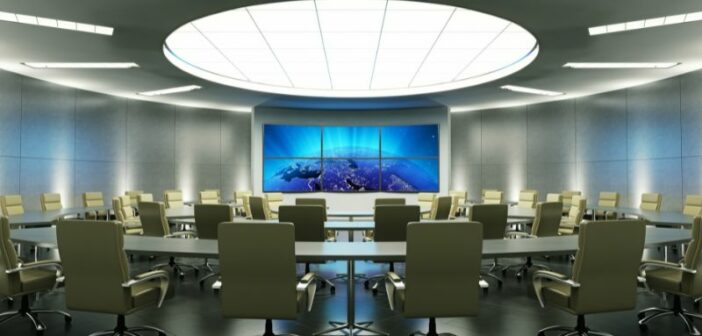Modern conference rooms have undergone a major evolution, incorporating advanced technologies to elevate productivity, collaboration, and overall user experience. These spaces are distinguished by their seamless integration of audio-visual equipment, creating an immersive environment for presentations, video conferences, and collaborative discussions.
At the heart of conference rooms today are high-resolution displays that facilitate dynamic content sharing and serve as a focal point for presentations. When purchasing these displays, businesses encounter a crucial decision: choosing between a consumer TV or a commercial display specifically engineered to withstand the demands of a contemporary business environment.
In this article, I will present the argument for utilizing commercial displays in conference rooms, emphasizing the importance of businesses evaluating their unique use cases before making a purchase decision.
User Simplicity
Most design engineers will tell you that the desired functionality of a video conference room should enable someone to walk into the room and use a table-top touch panel to see the upcoming meeting. The user would then hit the “Start Meeting” button and then the display, and all other peripherals such as camera, microphone, etc., will startup and show the Microsoft Teams Room, Zoom Room, Meets, or other video conferencing platform.
More simply, the desired use case is a one button tap to start. When the user is finished with the meeting, the one tap to end the call is the same, touch the panel to end the meeting and the system shuts down all of the components, including the display.
CEC vs. “Wake/Sleep”
While most video bars and other video conferencing systems do send some CEC (Consumer Electronics Control) commands, a more standardized way of presenting this “one touch start” is through the commercial displays’ ability to read the HDMI Clock and Data packets coming from the video bar or room system.
For context, HDMI was initially created for the consumer market, but as adoption became more widespread, it eventually bled into the commercial market. The latest version of HDMI 2.1, for example, is able to support more demands of commercial AV systems.
This is important because CEC was created as a means to control HDMI connected devices using only one remote controller. Because of the HDMI standard’s consumer roots, that makes perfect sense. If a consumer purchased an LG TV and soundbar, it would be much more convenient to control both devices from a single remote.
The desired conference room use case, however, may see issues relying on this CEC system to appropriately control the display via HDMI as there are no real documented standards for CEC between devices and display manufacturers. Most commercial display manufacturers have integrated a wake on signal protocol into the firmware of their displays. These protocols automatically recognize when a signal is sent to the display and wakes it from sleep. It also knows to stay dark when a signal isn’t detected. This is accomplished through signal sensing and not CEC.
In some cases, the user must set the display’s menu to go to sleep with power on and not turn off completely. Moreover, there are a few different power management settings that should be enabled or disabled to get the desired wake/sleep functions on a commercial display.
Fortunately for LG customers using many partner video bars, these settings are baked into the LG firmware to automatically change when plugging in the video bar via HDMI. All they have to do is plug the video bar to power, plug the video bar into the display via HDMI and power it up.
Commercial is Always the Winner
Furthermore, wake on signal isn’t the only advantage for commercial displays over consumer options in conference rooms. Many consumer displays come with out of the box support for apps such as Amazon Prime, Netflix, Hulu and more. In a professional setting, these applications may prove unprofessional at the least or at worst break company code of conduct. There is no easy way to lock out these applications nor control them from a central location.
Commercial’s warranty is another major advantage. For most consumer displays, the warranty becomes null and void if the product is used in a commercial setting. So, if a display stops working after six months, there is nothing the company can do to replace it. On a commercial display, there are typically two-to-three-year warranties with LG offering a 3-year, and even 5-year option on most commercial models.
Commercial displays also have greater longevity due to their higher brightness and ability to stay on for much longer than consumer displays. For example, a consumer display is typically rated for a max of eight hours of use, five days a week with around 200 – 300 Nits (Nits being a unit of brightness). Commercial displays range from 300 – 700 Nits in indoor spaces, running 16 to 24 hours a day, seven days a week. These are ideal for spaces with higher sunlight or indoor working spaces with brighter lights than your typical living room.
So, while a consumer TV may be less expensive to purchase, it’s sure to lack the features and functionalities that address the unique demands of professional settings. As organizations navigate the landscape of technology options, commercial displays will help them craft a modern, reliable and efficient conferencing workspace.
To learn more about commercial displays for modern conference rooms, visit the LG Business Solution website here.
Related News:
LG Business Solutions Spotlighted at CES 2024
LG CreateBoard and IGEL Spearhead a Digital Signage Revolution

